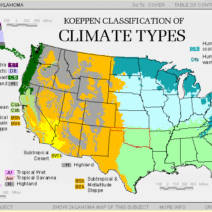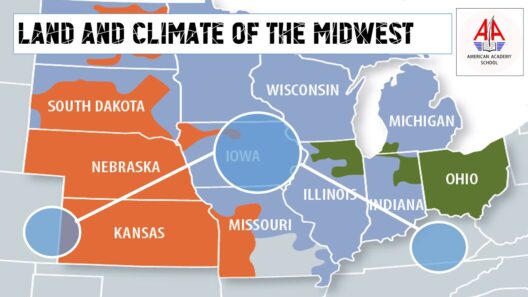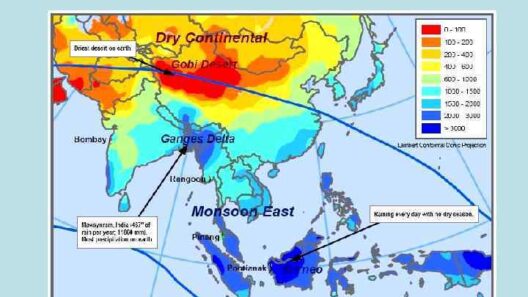The Middle Colonies of colonial America, which comprised modern-day New York, New Jersey, Pennsylvania, and Delaware, exhibited a unique climate shaped by their geographical position. Situated between the cooler New England colonies to the north and the warmer Southern colonies to the south, the Middle Colonies enjoyed a temperate climate characterized by a distinct four-season weather pattern. This climatic diversity not only influenced the daily lives of the inhabitants but also played a fundamental role in shaping agricultural practices, economic activities, and even social structures in the region.
In the spring months, specifically from March to May, the Middle Colonies experience a refreshing transition from the icy grasp of winter to the burgeoning signs of life. As temperatures gradually rise, ranging from the upper 40s to the mid-70s Fahrenheit, the melting snow facilitates a vibrant awakening of flora. This season is marked by the lushness of budding trees and the blossoming of spring flowers. The onset of warmer weather is pivotal for farmers, who begin cultivating crops such as wheat, oats, and barley during this period. Additionally, spring rain is vital, replenishing the soil moisture necessary for the healthy growth of these agricultural staples. However, the potential for late frosts serves as a cautious reminder for farmers to act judiciously in their planting endeavors.
Summer, stretching from June to August, brings about the warmest temperatures in the Middle Colonies, with averages soaring into the 80s and occasionally reaching the 90s. This season is characterized by long, sunny days, punctuated by occasional thunderstorms that enhance the humidity levels. The climatic conditions during summer are particularly favorable for agriculture, with crops reaching their full maturation. The warmth also supports an array of activities, including trade and social gatherings, which are vital for community building. Families often partake in leisure activities, appreciating the abundant resources provided by both the land and waterways. Notably, the exceptional growing season presents opportunities for harvesting fruits such as peaches, berries, and melons, making summer a bountiful period.
As summer wanes, autumn arrives in the Middle Colonies, ushering in a season of change. From September to November, temperatures begin to taper, often falling between the 50s and 70s. The landscape transforms into a vibrant mosaic of reds, oranges, and yellows as deciduous trees prepare for winter. This season is marked by the harvest, a critical phase for farmers and a time of celebration, as they gather crops that have been nurtured through the warmer months. The agricultural bounty includes not only grains but also vegetables like squash, pumpkins, and root crops. Autumn is also characterized by an increase in outdoor communal activities, with fairs and festivals that bring together communities to celebrate the fruits of their labor. As the days grow shorter and cooler, inhabitants begin to prepare for the impending winter, storing food and ensuring their homes are equipped to withstand the colder months.
Winter, from December to February, presents the Middle Colonies with a starkly different climate. Temperatures can plummet to the 20s and 30s, often accompanied by snowfall that blankets the landscape. The chill of winter fosters a period of dormancy for many plant species, while wildlife adapts to survive the frigid conditions. This season is typically associated with hardships; however, it also reflects resilience. Farmers shift their focus from planting to indoor pursuits, engaging in activities such as preserving food, crafting, and repairing tools in preparation for the spring. Winter also brings about festive occasions, where traditions and customs are celebrated within communities. The stark beauty of the snowy landscape offers a different kind of tranquility, allowing for contemplation amid the quietude of nature.
Moreover, the Middle Colonies’ climate has not only shaped the agricultural practices of the time but has also influenced the socio-economic dynamics of the region. The temperate climate allowed for a diversity of crops and livestock, contributing to the thriving economies of towns and cities. This agricultural surplus enabled the development of trade routes, facilitating the exchange of goods both locally and overseas. Additionally, the distinct seasonal patterns influenced migration and settlement patterns, as populations expanded in response to favorable climatic conditions.
In conclusion, the climate of the Middle Colonies encapsulates a fascinating interplay between natural conditions and human activity. Each season is marked by transformative changes in the weather, which have historically dictated the rhythm of life for its inhabitants. The temperate climate fosters a diversity of agricultural products, enriches community ties, and plays an essential role in the socio-economic fabric of the region. Understanding the climatic history of the Middle Colonies provides insight not only into the environmental conditions of the period but also into the adaptability and resilience of those who made it their home. The four seasons serve as a reminder of nature’s cyclical pattern, influencing culture, agriculture, and community life in profound ways.








